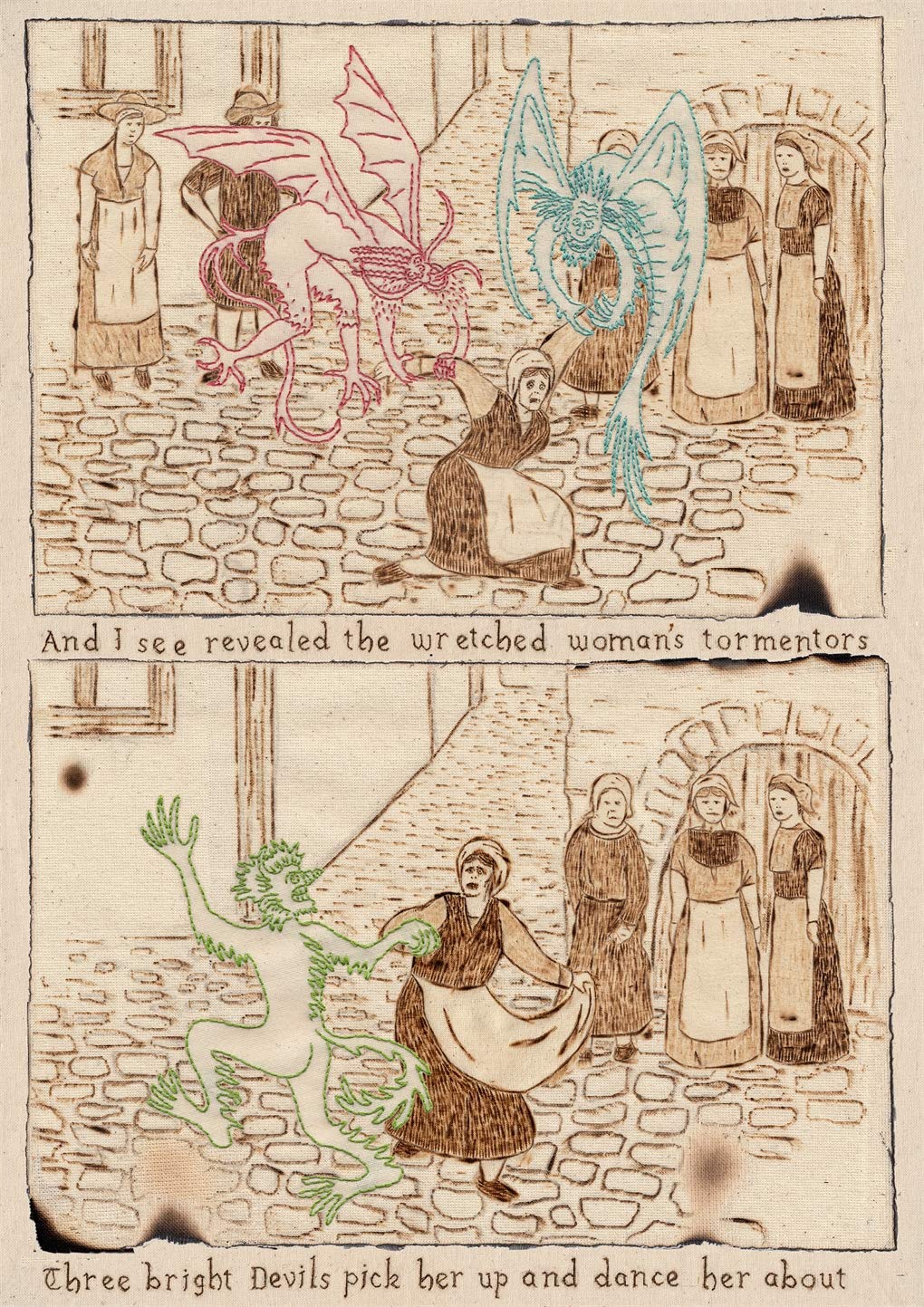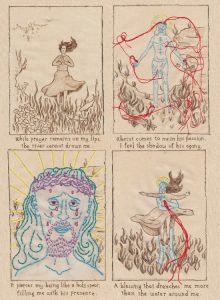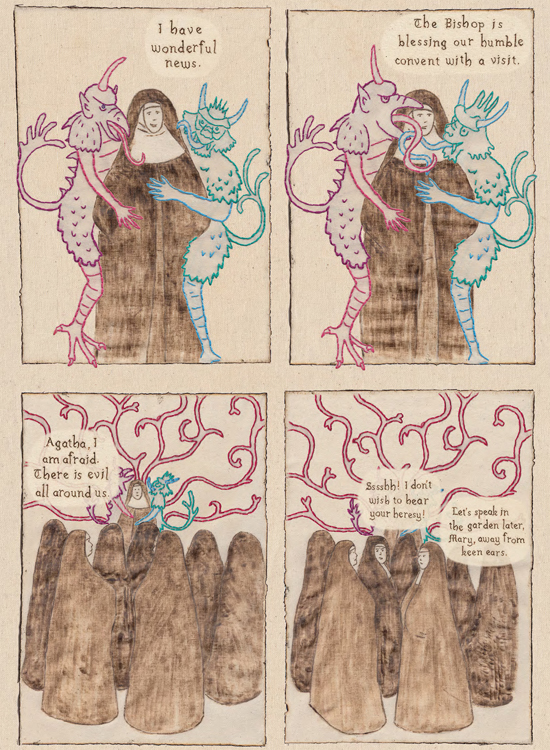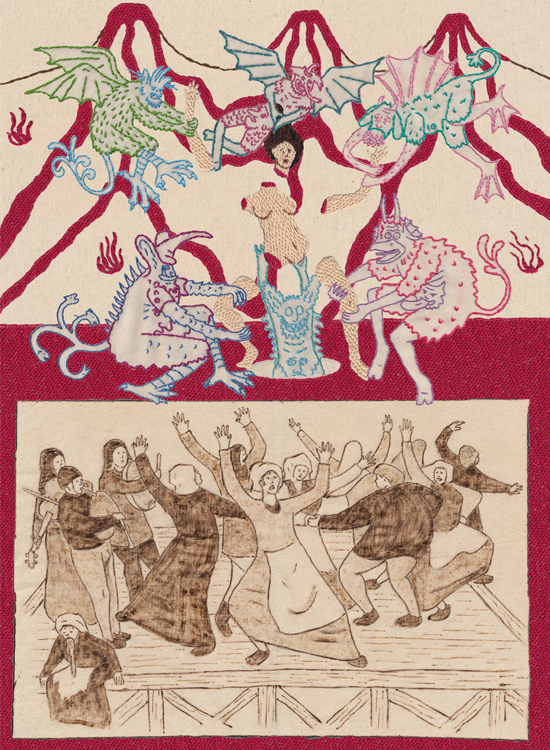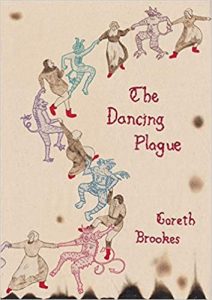
The Dancing Plague
By Gareth Brookes
Published by SelfMadeHero
In The Dancing Plague, a fictionalized figure offers the reader a narrative window into one of the most enigmatic and perplexing events in history: the Dancing Plague of 1518 in Strasbourg, Alsace.
Through a mixed-media approach that emphasizes key thematic elements, a narrative perspective that takes the form of a fictionalized composite of two historical figures, and a story that follows people being tormented by a plague whose source is invisible to their eyes but whose effects are all-too-immediate, The Dancing Plague is an extremely timely historical fiction graphic novel.
Strasbourg, 1518 
In the foreword to The Dancing Plague by Anthony Bale, Professor of Medieval Studies at Birkbeck, University of London, it is noted that the perspective character from the graphic novel, Mary, is a composite of two historical figures: St. Christina the Astonishing and Margery Kempe.
If it seems remarkable that multiple historical figures would inform a single character, consider that the outbreak of dancing that took place in Strasbourg was not, as one might expect, a singular incident… even in Strasbourg. Professor Bale notes in the introduction that similar dancing outbreaks occurred in Strasbourg in 1374 and 1418.
And there are also plenty of details about day-to-day medieval life included in this graphic novel, as well.
One example is the practice of becoming an anchoress – a woman who elects to be walled into cell for the duration of her life, so as to better devote her life to prayer and devotion – which plays into the narrative in an unexpected way (and if you’ve been following the books released by SelfMadeHero closely, you might remember an anchoress from one of the stories in the I Feel Love anthology – perhaps 2021 is, fittingly, the year of the anchoress).
Choreomania & Pyrography
In order to tell the tale in The Dancing Plague, Brookes utilized his unique “pyrographic” technique, a method of burning images into the material using heated implements, combined with actual embroidery (if you want to see more of his work – and no one could blame you – check out his website).
To suitably convey the details of the methods used by Brookes, the graphic novel is beautifully printed, so effectively that even the texture of the paper is visible on the page. The result is an historical fiction graphic novel that at times feels more like an historical artifact itself – there’s very little to stop you from slipping into this world (shout-out to the incredible design of this book by Txabi Jones).
While this innovative mixed media approach imparts a unique aesthetic to the graphic novel – and one that’s just genuinely enjoyable to look at – these techniques are also used to convey important thematic meaning.
The pyrographic elements are used for the elements that are “of our world,” like the humans and the buildings. Meanwhile, the embroidery elements represent the stuff that falls under the purview of the supernatural: the demonic figures that force the humans to dance, for example, or the heavenly visions experienced by the narrator.
This duality is further emphasized by the fact that the embroidered demons are unbound by comic conventions like panel borders, their supernatural dance steps taking them into the gutters as they force the people of Strasbourg to endlessy boogie until they collapse.
This distinction, between the elements of the narrative that belong to the heavens or the earth, ultimately proves important to the climax, specifically through the red shoes worn by the hapless dancing citizens.
The Dancing Plague
In the acknowledgements section, Brookes notes that much of the work on The Dancing Plague was completed during “the great pandemic of 2020.” This is evident throughout the book: it’s as though the isolation and torment by the invisible – common elements for both the 1518 and 2020 plagues – are baked into every page.
As we head into an uncertain and quite-possibly indefinitely plague-ridden future, The Dancing Plague is recommended reading, offering a meditation on instances in the past when people have been similarly faced with the unknown… And as you read, you can hope that maybe the next time a plague comes around, we’ll all be a little better prepared.
The Dancing Plague is available at a bookstore or public library near you beginning today, Tuesday, August 31st, 2021.



